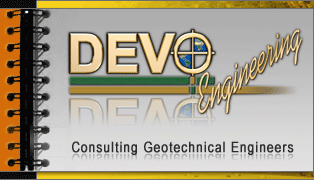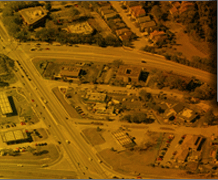







| services |
| - Homepage |
| - Geotechnical |
| - Environmental |
| - Report Orders |
| ponds software |
| - Price List |
| - Order Form |
| - Downloads Section |
| - Technical Support |
| - Technical Memoranda |
| - Slides Shows |
| - Useful Links |
| - Mailing List |
| Access Reports |
| - Login |
| workshop |
| - Overview |
| - Agenda |
| - Registration Form |
| - Class Assignments |
| company info |
| - About Us |
| - Contact Us |
training workshop for ponds 3.3 |
www.devoeng.com |
CONSULTANT TRAINING WORKSHOP AGENDA FOR PONDS 3.3 SOFTWARE |
||
|
Calendar Year 2009: 8:30a.m. to 3:45p.m. 8:30a.m. to 10:00a.m., 15 min. break, 10:15a.m. to 12:00 noon, 30 min. Lunch Break, 12:30p.m. to 3:45p.m. presented by Devo Seereeram, Ph.D., P.E. Devo Engineering, 5500 Alhambra Drive, Orlando, Fl 32808 |
||
|
The following is a tentative outline of topics to be discussed, but may be subject to change depending on the needs and interest of the attendees.
After lunch:
|
||
Course Instructor |
||
|
Dr. Devo Seereeram was born on the 4th of July, 1957 on the island of Trinidad in the West Indies. After completing his high school education in Trinidad, he proceeded to the University of Florida in Gainesville where he obtained his BSCE (with high honors), Master of Engineering, and Ph.D. in Geotechnical Engineering. After earning his doctorate in May 1986, he joined the private consulting profession in Orlando where he has amassed significant state-wide experience in geotechnical engineering, environmental engineering, ground water/surface water interaction modeling, surface water modeling, innovative stormwater management design, ground water modeling, and hydrogeologic engineering. In addition to working as a consulting engineer in central Florida, Dr. Seereeram has worked as a construction manager on several major construction projects in the Caribbean. He started his private geotechnical engineering consulting business in Orlando on November 1, 1991.
Dr. Seereeram is the also developer of the PONDS computer program which is widely used throughout the state of Florida for ground water & surface water modeling of stormwater management systems. Dr. Seereeram has provided expert witness testimony and expert representation in several settings. Devo is a frequent lecturer at the annual FES Stormwater workshops and is well known throughout the state of Florida. He is also a member of the FDEP’s Stormwater Technical Advisory Committee. |
||


